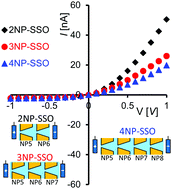Ionic circuitry with nanofluidic diodes
Abstract
Ionic circuits composed of nanopores functionalized with polyelectrolyte chains can operate in aqueous solutions, thus allowing the control of electrical signals and information processing in physiological environments. We demonstrate experimentally and theoretically that different orientations of single-pore membranes with the same and opposite surface charges can operate reliably in series, parallel, and mixed series–parallel arrangements of two, three, and four nanofluidic diodes using schemes similar to those of solid-state electronics. We consider also different experimental procedures to externally tune the fixed charges of the molecular chains functionalized on the pore surface, showing that single-pore membranes can be used efficiently in ionic circuitry with distinct ionic environments.



 Please wait while we load your content...
Please wait while we load your content...